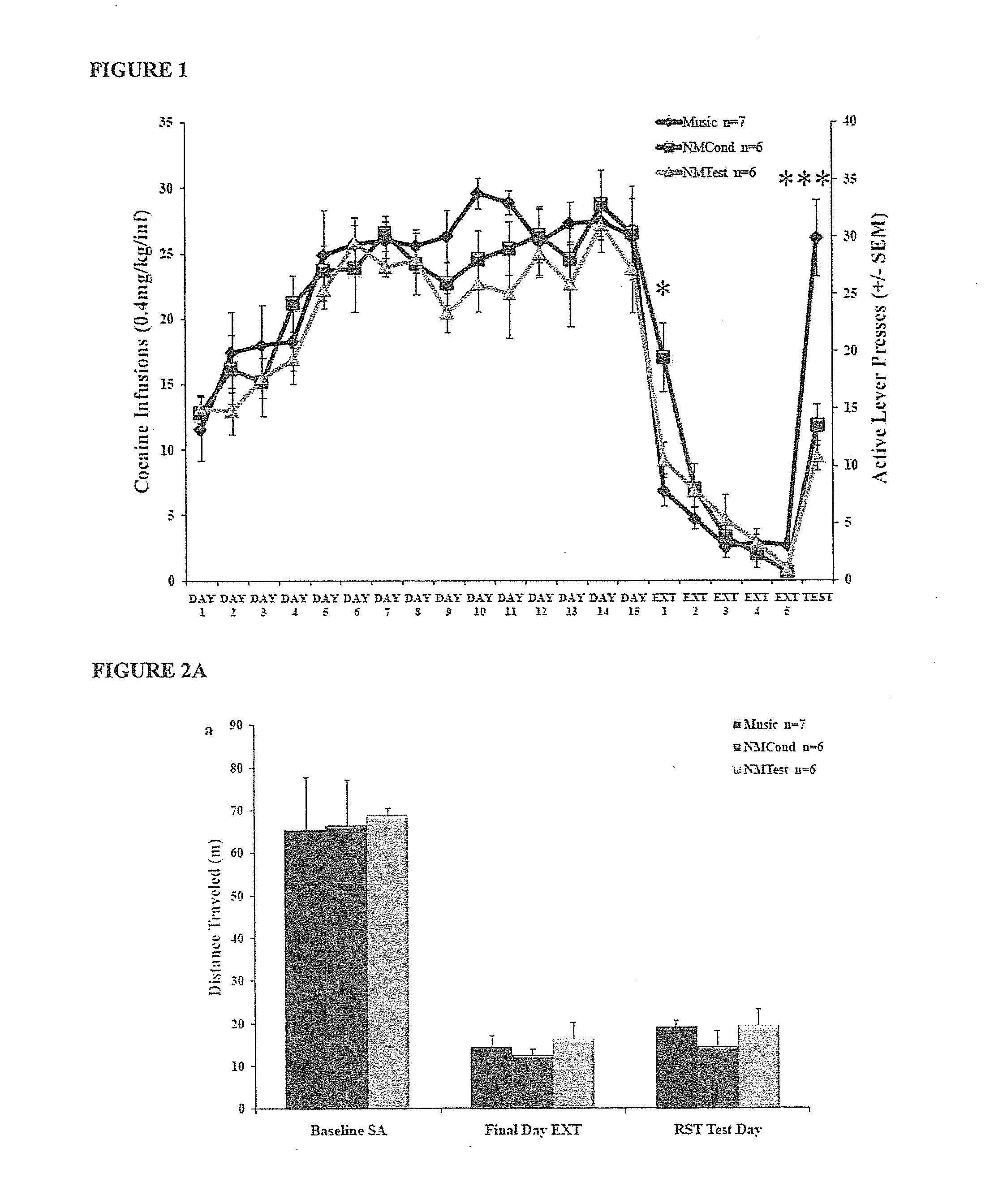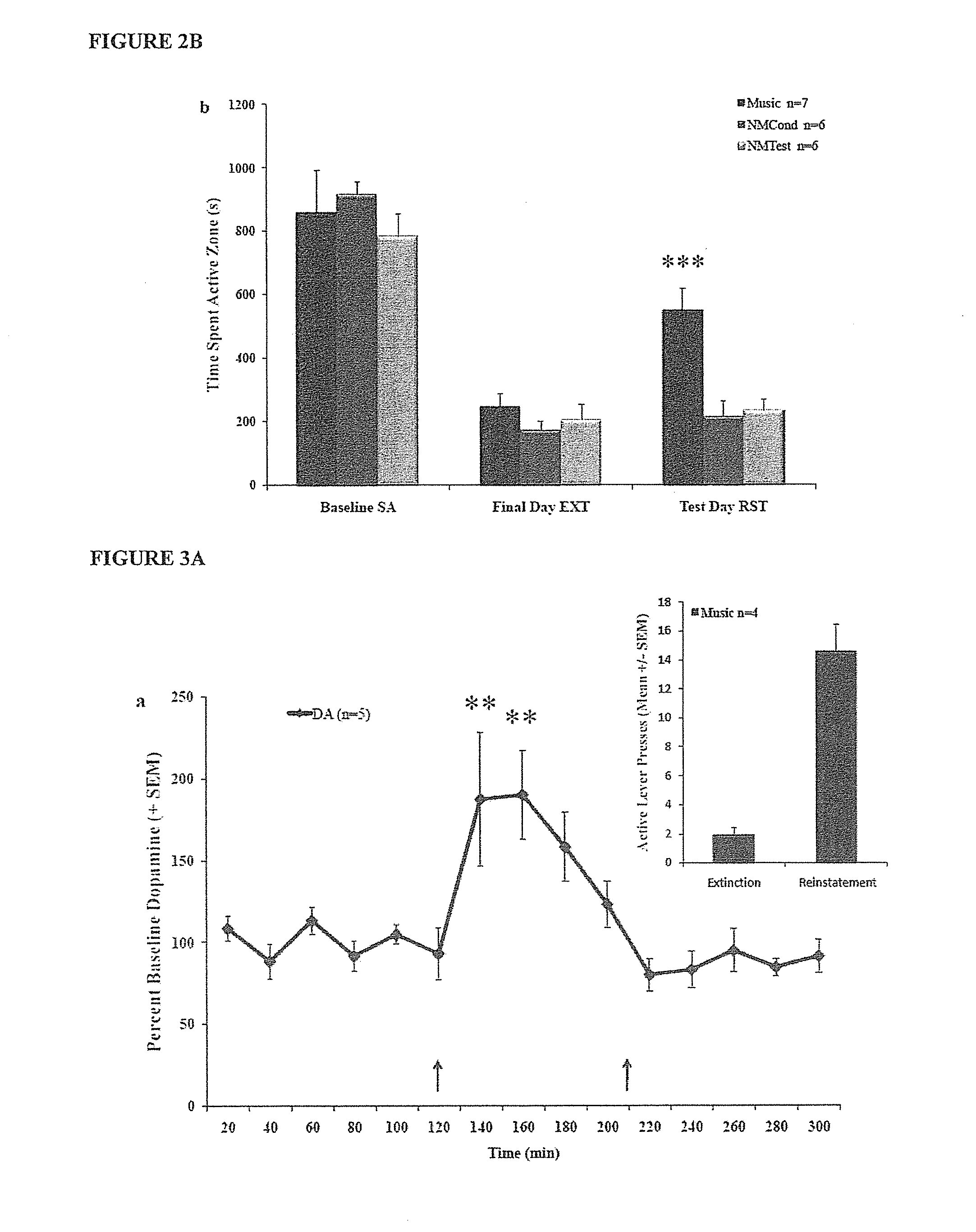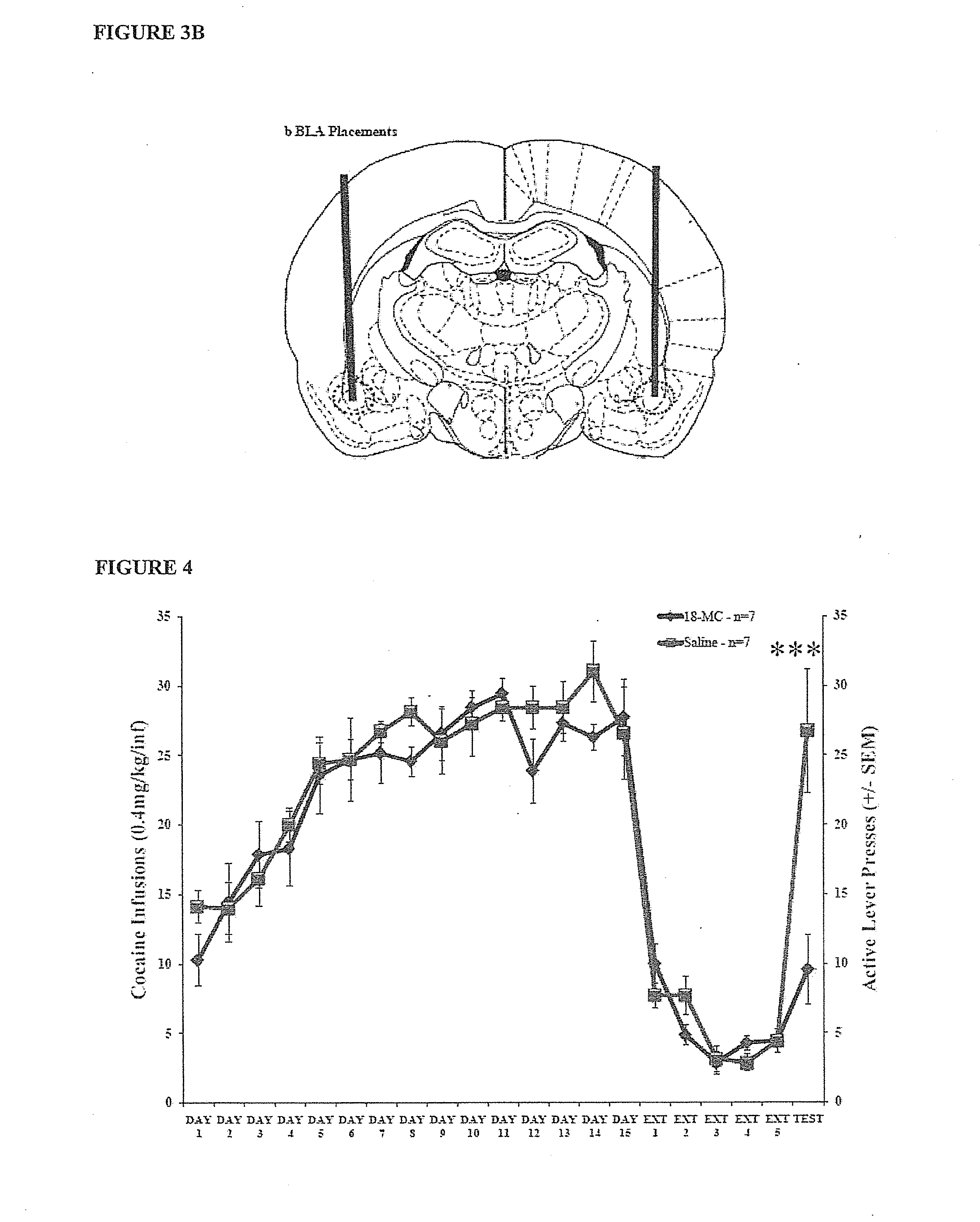Blocking of cue-induced drug reinstatement
a cue-induced drug and reinstatement technology, applied in the field of treatment of substance abuse, can solve the problems of current misuse and abuse of prescription medications (including opioids and benzodiazepines), the current misuse and abuse of prescription medications is epidemic, and the financial cost to society is staggering. , to achieve the effect of increasing the rate of desensitization and ca++ permeability, low binding affinity, and high densities of 34-like receptors
- Summary
- Abstract
- Description
- Claims
- Application Information
AI Technical Summary
Benefits of technology
Problems solved by technology
Method used
Image
Examples
example 1
[0066]The present study had three objectives: (1) validate the effectiveness of music as a contextual conditioned stimulus in an operant reinstatement model of relapse; (2) determine, using in vivo microdialysis, if dopaminergic changes occurred during music-induced reinstatement of drug seeking; and (3) assess the efficacy of 18-MC to abate cue-induced drug seeking behaviors. All studies were conducted using a model of self-administration, extinction and reinstatement in which rats made lever presses for cocaine in the presence or absence of a musical cue (TABLE 1). The results of the present study provide novel insight into the mechanisms underlying contextual cues and associated drug-seeking behavior, and also demonstrate the effectiveness of 18-MC as a potential treatment for relapse, even in the presence of complex contextual cues.
[0067]Materials and Methods
[0068]Animals
[0069]Naïve female Sprague-Dawley rats (Taconic Germantown, N.Y.), weighing approximately 250 g at the start ...
PUM
| Property | Measurement | Unit |
|---|---|---|
| Dimensionless property | aaaaa | aaaaa |
| Dimensionless property | aaaaa | aaaaa |
| Time | aaaaa | aaaaa |
Abstract
Description
Claims
Application Information
 Login to View More
Login to View More - R&D
- Intellectual Property
- Life Sciences
- Materials
- Tech Scout
- Unparalleled Data Quality
- Higher Quality Content
- 60% Fewer Hallucinations
Browse by: Latest US Patents, China's latest patents, Technical Efficacy Thesaurus, Application Domain, Technology Topic, Popular Technical Reports.
© 2025 PatSnap. All rights reserved.Legal|Privacy policy|Modern Slavery Act Transparency Statement|Sitemap|About US| Contact US: help@patsnap.com



